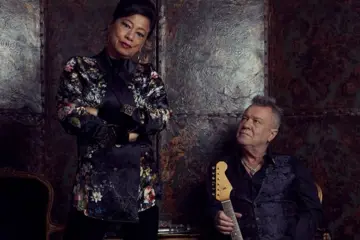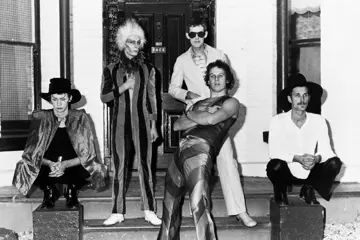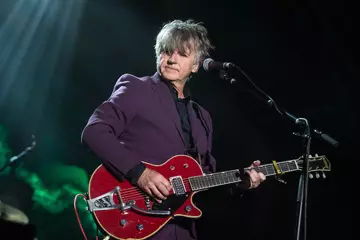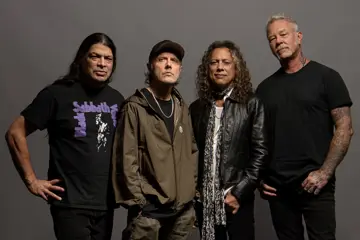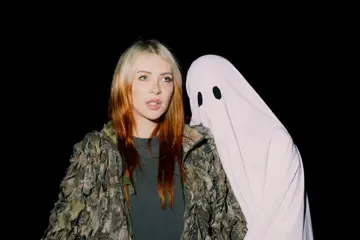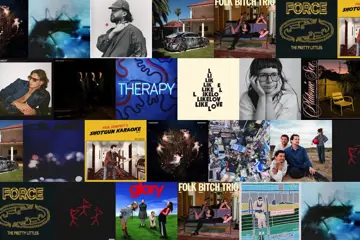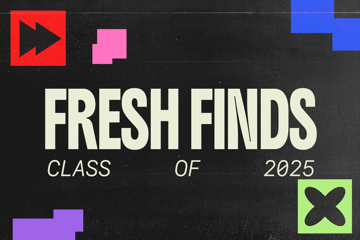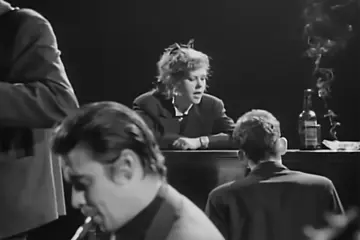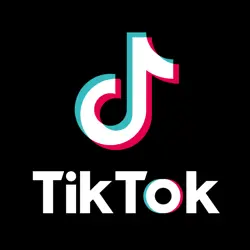 TikTok
TikTokWhen was the last time you wanted to listen to music and thought - you know what? I’m in the mood for whatever vibe, whatever genre, all mixed up and I have no clue what’s coming next.
If your answer is never, then that makes two of us.
It’s been well over a decade now since streaming rocked the world of music listening forever. For all of its flaws, from atom-sized royalties to algorithmic saturation, it is undeniable that streaming has not only made recorded music more accessible than ever.
It has totally shifted music culture, breaking down the genre-segmented identity boxes we were allowed to classify ourselves as. Nowadays, you don’t have to just be a metal fan. Or just a country fan. Or just a pop fan. We now have kids who could be massive fans of hardcore punk, queer indie folk and like… Icelandic experimental jazz-fusion, and are able to feel included by all those communities. I think that’s pretty bloody awesome.
But although DSPs have been around for a hot minute now, it seems like we are still only now starting to catch up with some of the longer-term impacts and seismic shifts streaming has created in music consumption and culture.
1. The psychology behind ‘Rainy Day Granola Green Witch Indie Pop’
My Spotify playlist library is like the music-collecting equivalent of an episode of Hoarders, cluttered with a calendar of playlists to keep track of my monthly listening, saved albums of friends’ recommendations, half-finished road trip playlists—you get the visual.
But if I’m to listen to some music outside of my library on shuffle to satisfy a musical craving, there are really only three avenues I’ll opt for. Either:
An artist (on shuffle)
A playlist for a specific mood (again, on shuffle) or
A specific album (not on shuffle, though. I’m not a heathen)
I’ll have a vibe I’m after, and I’ll pair it. And I feel like we’ve all started to become more of these emotional/musical sommeliers since we have so much choice at our fingertips. We see this widespread leaning towards specificity and niche more and more across streaming’s core structures, too. First, we laughed at the bonkers, hyper-niche Daylist labels that Spotify would spit at us - mine as I’m writing this is ‘soul-crushing brit pop monday afternoon’. Checks out.
But what about the psychology of this? Anyone who works in any aspect of music promotion knows far too well that to sell someone new music, you can’t just blindside people with something completely unexpected. Humans instinctively are fearful of the unknown, and music isn’t exempt from this.
To embrace new music, we often have to take away some of these unknowns to coax them forward. The rinsed and repeated “If you love x artist, you might like y artist” follows this model model, for example. Tired, but tried and true.
So, considering this sort of mindset behind new music discovery, this gravitation towards the niches does make total sense. Where our time and money are not abundant resources to spend on entertainment, what will we take a bet on?
2. The Harrowing Narrowing
The trends of consumerism are clear. The people are either craving niche and/or are hopping on the bandwagons of monoculture hype (re: brat. Chappell Roan. etc.).
We’ve also watched this with festivals. Genre-specific events are soaring while the ‘something-for-everyone’ model of broader programming has seen major festivals dropping like flies in recent years. While we waved again to Splendour and Groovin The Moo, lauded country festival CMC Rocks was nominated for Festival of the Year amongst four other international events at the ACM Awards, hosted by the Academy of Country Music. And the brand-new Bludfest, led by UK pop-punk artist Yungblud, welcomed 30,000 punters to its inaugural year amidst a British festival circuit that has also slogged through a similar rough year.
It’s then interesting that amidst all these trends, youth radio (excluding genre-specific stations, of course) is still steadfast to a more traditional wider net cast for their general rotation. If we look at triple j, the music programming has always been broad, and this has been the beauty of the station, setting it strongly aside from its commercial counterparts.
However, in recent years, triple j has definitely reshuffled the genre balance following the responses of Hottest 100 data showing an increasing appetite for pop, rap, and dance music.

Graph from a study published by the ABC in 2023 on Hottest 100 trends from the 90s to now.
The growing platforming of pop was also definitely spotlighted after the recent Hottest 100 countdown, mirroring 2024’s international phenomenon of pop omnipresence, with arguably 7 out of the top ten falling under the genre umbrella and, of course, Chappell Roan’s top-spot trophy with Good Luck, Babe! receiving the most votes in Hottest 100 history.
Another move the station has made in recent years has been its quite stark shift away from punk and hardcore rock, which comes as a ripple effect of more mainstream rock taking a dip. With their punk and hardcore program short.fast.loud. moving to Double J this year, it seems a clearer line in the sand is being drawn, and the more fringe rock genres are being realigned over the fence.
I’ll agree the whiplash of playing perhaps Dom Dolla and IDLES side by side could certainly send some folks to switch stations, so sticking to a narrower scope on the genre spectrum does seem like a safer bet all things considered. But does this widening curatorial division alienate a whole heap of younger punk fans? They certainly haven’t suddenly become extinct amidst the pop girlies supremacy of 2024.
There’s definitely a deliberate split being made at the moment right on the line between triple j and Double J where some rock subgenres should sit, surely to make room for more pop and dance programming. Even in indie rock land, a couple weeks ago, boygenius was split between the stations with Lucy Dacus’ new track Ankles going on triple j, and Julien Baker’s Sugar In The Tank going on Double J, even though they quite literally have a Venn diagram listenership that is nearly a circle.
But regardless of all this, I hear the jaded far cries: Young people don’t want people telling them about new music! They just get it from TikTok. And to that, while there’s obvious truth to TikTok being another major disrupter to music consumption patterns in recent years and being a central catalyst to music-adjacent explosions of viral movements, I’d like to argue quite the opposite.
Even in today’s world awash with algorithms, I am certain the age of the tastemaker is not dead, and I actually believe that Gen Z is hungry for exactly that.
3. Is the tastemaker our ticket to escape the algorithm spin-cycle?
In no way would I count my conversations amongst fellow music-loving mates to be perfectly objective data on Gen Z likes and listening trends, but a broken record narrative I hear from an overwhelming majority is that folks are sick of their Spotify algorithm and are, indeed, craving something new.
While many admit that most new music they discover is through personalised playlists, as well as TikTok, as we already expect, the songs that have hit the hardest— the ones that my friends are actually brimming with excitement to share—are most often from two sources:
From a movie or TV show - obviously, the perfect pairing of on-screen narrative and music will never fail as one of the most potent and powerful channels for an engaged audience to create that emotional connection. Or,
From a recommendation.
Whether it’s a dependable friend with impeccable taste or a favourite musician or celebrity sharing some of their most beloved albums in an interview, the power of human recommendation is still a major, often overlooked source of inspiration when we’re talking about Gen Z.
But if a go-to source is hard to come by and you’re feeling stuck in the recommended loop of the same six daily mixes, what will be the circuit breaker?
This is where I begin to wonder: what would happen if tastemaker stations like triple j brought back more genre-specific specialty shows and promoted more of an on-demand approach to their programs like streaming services have adopted over TV to cater to younger generations? Avoiding the overall narrowing but still playing to the niches?
But is that then just turning radio into a set of curated playlists and fully eliminating the format’s particular strengths only it can possess over a DSP?
Radio, particularly triple j, has heart—and when we’re talking about music, heart is an element that truly can’t be dismissed. The live element and the direct connection of the triple j textline are facets of connection you can’t quite replicate as being a curated playlist machine. Still, with the live component taken away, having a hosted program over a playlist allows the infectious passion of the presenters to shine as they introduce the songs to us, sharing insights and fun facts about the artists that let us take a step closer to the art and stories we’re receiving.
So, where from here?
I don’t think that these trends of niche-narrowing are the be-all and end-all avenues in our market at the moment, either. Maybe a format that’s against the grain is necessary as folks are getting increasingly sick of all the same-same that their streaming radio is feeding them, or the tidal waves of TikTok-driven trends flooding our feeds.
While TikTok is its whole own can of worms for another piece, I really love how Mardi Caught encapsulated the magnitude of the platform’s role in a recent piece with the Sydney Morning Herald and The Age - TikTok truly is a “globally homogenising tastemaker” that cannot be underestimated. And I think that TikTok has stepped in for Gen Z as this artificial, algorithmic tastemaker of sorts.
But alas, as we know with the truth of algorithms, like those fuelling the major music discovery portals of TikTok and Spotify, momentum sits with the majority. And in English-language music, Australia’s population numbers are so easily eclipsed by the hundreds of millions more US and UK users driving what ends up in our feed. Even geography plays a part, too, as content from tours across the US can provide 30 show dates’ worth of user-generated social content over a maybe max five-date Australian tour. How can Australian content and culture compete in a system like this?
I don’t think we have all the answers yet in this Gen Z consumption conundrum. But amidst the growing ick towards suffocating recommendation algorithms, whether it’s triple j or another youth tastemaker to rise through the ranks, whether it be radio or podcasts or in-person events or something we haven’t even thought of yet, I truly believe Gen Z are craving a breath of fresh air from a tastemaker, in some format or another.
It has been a wild time for folks in these industry sectors over the past couple of years, and the resilience, agility and creative problem-solving across the board reflect professionals I respect deeply. I have never worked in radio, programming, curation, or streaming. My single authority on everything said here is that I’m a Gen Z music-lover and that I’m extremely passionate about learning from the communities around me about Gen Z music consumption habits and understanding as much as I can beyond my own circle. I am certainly no expert - nowhere near. I’m just a very curious Gen Z music Sherlock Holmes (I would definitely dig the hat).


